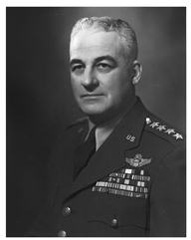one of the most effective Japanese naval commanders of the war; commanded supporting forces during many of the most important Japanese Pacific offensives, including the invasions of the Philippines, Port Moresby, Java and Midway; was instrumental in achieving the early tactical victories against US Navy forces in the battles of the Java Sea and the Coral Sea; in 1943 was posted to Saipan to command the 6th Submarine Fleet and was killed in action in July 1944.
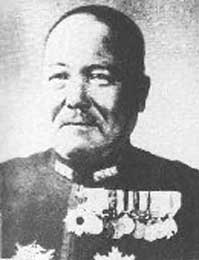
widely regarded as one of Japan's most gifted naval commanders, commanded escort forces for the invasions in the southern Philippines, Ambon, Timor and Java as well as a transport force during the Battle of Midway; is best known, however, for his contribution to the struggle for Guadalcanal; though an early advocate of the abandonment of Guadalcanal, which severely drained Japanese naval and air resources, commanded repeated operations under Admiral Mikawa during the second half of 1942 to reinforce the Japanese garrison there; in November he decisively defeated a superior US naval force as the battle of Tassafaronga, the last major naval engagement in the Solomons; his criticism of the co-ordination of air and sea operations during Guadalcanal resulted in the loss of his command, however, and he remained out of favor for the duration of the war.
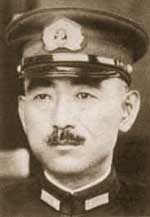
was a pioneer and leader in the Co-op Movement in Finland, and Prime Minister of Finland from 1926 to 1927; became Finland's leading Social Democratic Party (SDP) politician, and a strong proponent of the parliamentary system when the Finnish Civil War ended; main achievement was the rehabilitation of the SDP after the Civil War; served as Minister of Finance (1937-1939), Foreign Minister (1939-1940), and after the Winter War Minister of Trade (1940-1942); his leadership was very important in forming the grounds and creating the Spirit of the Winter War which united the nation; to accommodate the Soviet Union when the Continuation War ended, was tried for responsibility for the war in February 1946, and sentenced to five years and six months in prison; while still in prison, became the virtual leader of a faction of the SDP which had strong support from the USA and eventually came out on top after a great deal internal party strife lasting for much of the 1940s.

British deputy to Supreme Allied Commander Eisenhower between December 1943 and the German surrender in May 1945; widely regarded as an able strategist and outstanding wartime Allied commander, began the war as Director General of Research and Development at the Air Ministry; in 1941 succeeded Air Marshal Longmore as AOC-in-C Middle East and directed the development of pattern bombing techniques and air-ground force co-operation during the Desert War; recognizing the decisive effect of air superiority on ground operations, which was no accepted by official RAF doctrine, worked with Air Vice Marshal Coningham to reduce enemy airfields and installations and to vastly improve inter-service co-ordination in the theater; appointed Air C-in-C of the newly formed Mediterranean Air Command responsible to Eisenhower in early 1943, further developed techniques of long-range strategic bombing to isolate battlefields to tactical advantage, and achieved a highly effective integration of RAF and USAAF forces. As Eisenhower's deputy from December 1943, his commitment to inter-Allied co-operation forged a highly effective Allied air arm from diverse and sometimes antagonistic components; his resolute advocacy and direction of the Transportation Plan, the preparatory bombing of enemy communications in support of the Allied invasion fo Normandy, contributed significantly to the success of the operation.
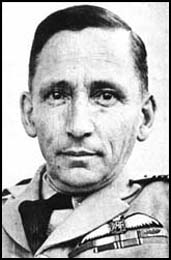
son of Masatake Terauchi, former Governor or Korea and Prime Minister of Japan; served in various important army posts, and as War Minister in the Ultranationalist Hirota cabinet (dominated by the Toseiha militarist faction) during 1936-7, before being transferred to command Japanese forces in Northern China in 1937, following the outbreak of full-scale war between the two countries; in November 1941, was given command of the Southern Army, Yamashita and Homma in command of forces under him; the invasions of Indochina, Siam, Malaya and Java were successfully completed under his direction, from headquarters in Saigon; also directed the construction of a 250-mile Burma Road by Allied POWs during which thousands died in brutal conditions; after the fall of General Tojo's government in July 1944, was one of those considered to replace him, but remained in command of the Southern Army during 1944 and 1945 for the ultimately unsuccessful defense of the Southwest Pacific, including New Guinea, the Dutch East Indies and the Philippine Islands; formally surrendered to the Allied command in Saigon in November 1945, having been absent from the surrender of Singapore in September due to a stroke.
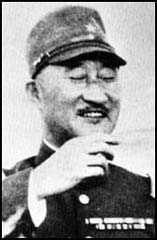
German soldier who commanded German ground forces in the Spanish Civil War and was a tank commander under Guderian in the battle for France; in 1942 briefley commanded the Afrika Korps but was captured by the British during the climactic Battle of El Alamein in October.
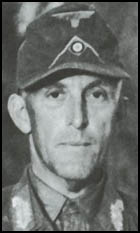
Russian cavalry officer and personal friend of Stalin before the war; served in Bessarabia during the Russo-Finnish War; was made a marshal and appointed Commissar of Defense, charged with improving the organization and training of the Red Army whose relative impotence in the face of the minute Finnish forces had accelerated the demand for change; severely hampered by lack of modern equipment, introduced harsh discipline and training techniques for the armies of the Central Soviet Front; sped up the replacing of horse-mounted cavalry with light tanks, which was still far from complete when the Germans invaded in June 1941; assaulted by 55 German divisions along a 300-mile front, his 47 divisions were forced back 600 miles, losing about 400,000 men and over 4,000 tanks; transferred to the Southwest Front in September 1941 but could do little to salvage the disastrous defeats suffered by forces under his predecessor Marshal Budenny; in May 1942, under pressure from Stalin, planned an offensive against Kharkov, unaware of the build-up of German forces there for their own assault; outcome there influenced Stalin's view of Timoshenko's abilities; transferred to the Northwest Front, played a limited role as Stavka representative in the Baltic and Balkans, and in operational planning, though he was nominally in overall command of the 2nd and 3rd Ukrainian Fronts under operational control of Generals Malinovsky and Tolbukhin; early setbacks made him to some extent the scapegoat for Soviet lack of preparedness in 1941.
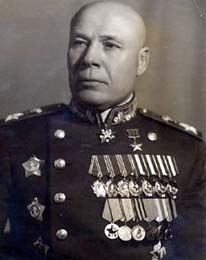
Croatian-born veteran of the Austro-Hungarian army and the Russian and Spanish civil wars; became a celebrated symbol of resistance as his well-organized partisan guerrilla bands fought German occupation troops in Yugoslavia from 1941 to 1944; with British assistance, his men tied down enemy units and weathered 7 major German offensives; eventually mustered and army of 250,000 and obtained recognition from the Yugoslav government-in-exile, which abandoned royalist General Draza Mihailovic's rival Chetniks in May 1944; liberated Belgrade that October, set up a provisional government, and became prime minister and eventually president of Yugoslavia, administering a Communist regime that was friendly to the West; remained in power until his death in 1980, whereupon the Yugoslav confederation disintegrated into civil war.
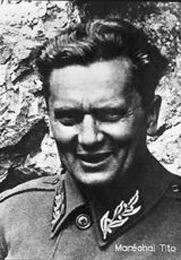
was a German engineer and senior Nazi figure, the founder of Organisation Todt; studied engineering in Karlsruhe and the School for Advanced Technical Studies in Munich; took part in World War I, initially with the infantry and then as an observer with the airforce, winning the Iron Cross; joined the Nationalsozialistische Deutsche Arbeiterpartei (NSDAP) (better known as the Nazi Party) on January 5, 1922; became an Oberführer (a rank equivalent to senior Colonel) in the Sturmabteilung (S.A.), then commanded by Ernst Röhm, in 1931 and also completed his doctorate (on "Fehlerquellen beim Bau von Landstraßendecken aus Teer und Asphalt" - "Sources of defect in the construction of tarmac and asphalt road surfaces"); following the appointment of Hitler as Reichskanzler on January 30, 1933, became (in July) Generalinspektor für das deutsche Straßenwesen ("Inspector General for German Roadways") and was involved in the new construction company for the motorways (Reichsautobahnen); later became Leiter des Hauptamts für Technik in der Reichsleitung der NSDAP ("Director of the Head Office for Engineering in the Administration of the Reich of the NSDAP") and Generalbevollmächtigter für die Regelung der Bauwirtschaft ("General Commissioner for the Regulation of the Construction Industry"); as a special privilege, was permitted to have considerable power and was not necessarily immediately answerable to any of the Reich ministries; was also appointed to the rank of Generalmajor of the Luftwaffe after its official promulgation in March 1935; in 1938, founded the Organisation Todt (OT), joining together government firms, private companies and the Reichsarbeitsdienst (Reich Labor Service), for the construction of the "West Wall", later renamed the "Siegfried Line", for the defence of the Reich territory; on March 17, 1940, was appointed Reichsminister für Bewaffnung und Munition ("Reich Minister for Armaments and Munitions") and oversaw the work of Organisation Todt in the occupied west; after the invasion of the Soviet Union in June 1941, was appointed to manage the restoration of the infrastructure; in 1941, became increasingly distant from the commanders of the Wehrmacht and from Reichsmarschall Hermann Göring, the Oberbefehlshaber der Luftwaffe (Commander-in-chief of the Luftwaffe) in particular; did remain close to Hitler at this time, yet, after an inspection tour of the Eastern Front, complained to him that, without better equipment and supplies for the armed forces, it would be better to end the war with the USSR; inevitably, Hitler rejected such an assessment of the situation and carried on the offensive against the Soviets regardless; on February 8, 1942, while flying away from the conclusion of a meeting with Hitler at the Wolfsschanze ("Wolf's Lair") at Rastenburg, his aircraft exploded and crashed; was succeeded as Reichsminister by Albert Speer, who had narrowly missed being on the same aircraft.

Japanese diplomat with considerable experience in European politics, had served first as secretary to Japan's Berlin and Washington embassies durint the 1920s and early 30s, and was later appointed ambassador to Berlin (December 1937) and then to Mosco (October 1938-August 1940); from October 1941, worked in Premier Tojo's cabinet as Foreign Minister, though his serious attempts to find grounds for settlement of disputes between Japan and the United States were hindered rather than aided by the increasingly inflexible demands of Tojo and the militarist cabinet; a firm opponent of the surprise attack on Pearl Harbor and the increasingly dictatorial policies of Premier Tojo, eventually resigned his office in September 1942 in protest of the establishment of the Greater East Asia Ministry, but was reappointed Foreign Minister by Kantaro Suzuki in April 1945, and charged with seeking a peace settlement with the Allies; resigned in August 1945 and was later sentenced to 20 years imprisonment for 'crimesof conspiracy against peace' by the International Military Tribunal for the Far East; died in 1950 in an American military hospital.

a hard-nosed militarist; the third son of a Japanese army lieutenant; a totally dedicated soldier, rose through the ranks after overseas service in Switzerland and Germany and was consumed by a burning desire to establish Japan's military supremacy; served as war minister, army chief of staff, and prime minister, forcing the Vichy regime in France to admit Japanese troops to Indochina and presiding over a government that sent a carrier strike force to Pearl Harbor; after the sneak attack on Pearl Harbor, his image, with his spectacles and inscrutable grin, became a kind of racial stereotype of the Japanese enemy that was widely seen in American media; after the fall of the Mariana Islands in 1944, was replaced by the emperor as premier with the less fanatical Lieutenant General Kuniaki Koiso; after Japan surrendered, made a failed suicide attempt; was tried as a war criminal and hanged in December 1948.

Soviet commander of the 57th Army which figured prominently en the encirclement of the German 6th Army inside Stalingrad in early 1943; in 1944 was appointed to command the 4th Ukrainian Front for the drive to recapture the Crimea; promoted to marshal, subsequently directed operations in the Ukraine, Bulgaria, Rumania, Austria and Hungary; in 1945-6 was Supreme Commander of Soviet forces in Bulgaria and Rumania.

British naval officer who began the war as Rear Admiral, Destroyers with the Royal Navy's Mediterranean Fleet; in 1940, was promoted and given command of the Home Fleet based at Scapa Flow in the Orkney Islands; in the important post organized the protection of convoys and maintained the successful blockade of German ports; also had overall command of the operation to find and sink the Bismarck in 1941, and later advocated an attack on the Tirpitz in Norwegian waters; the Admiralty preferred him to concentrate on convoy protection, and his last wartime position - in charge of naval forces in eastern England from 1943 - also involved protecting supplies, this time for offensive operations in Northwest Europe following the Normandy landings in June 1944.

Commander of the Yokosuka Naval Bast and the Kure Naval District from September 1941 until his appointment succeeding Adm Koga as C-in-C of the Combined Fleet in 1944, was faced with the task of designing a strategy to halt the American advance, now almost within striking range of Japanese home territory; his plan, Operation A-GO, which anticipated drawing the US Pacific Fleet away from the Marianas for a final engagement, was founded on the traditional concept of the 'decisive battle', though it also had to take into account the limited remaining resources of the Combined Fleet, which were insufficient to support any large-scale counteroffensive; the defeat of his fleet in the resulting Battle of the Philippine Sea, and later at Leyte Gulf, saw the virtual destruction of Japan's remaining air and naval power. Despite the apparent hopelessness of Japan's position in mid-1945, was a strong supporter of the Army extremists, Gen Anami and Gen Umezu, from the time of his appointment as Chief of the Naval General Staff in May, and continued to oppose unconditional surrender; was later acquitted of war crimes by the International Military Tribunal for the Far East.
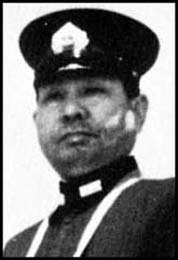
less than three months after his inauguration in 1945, a World War I artillery officer, failed haberdasher and former senator from Missouri, was sworn in as president on the death of President Franklin D. Roosevelt; though unschooled in foreign policy, competently completed Roosevelt's mission of guiding the nation to victory over the Axis powers; attended the Potsdam Conference with new British Prime Minister Clement Attlee and Soviet Marshal Josef Stalin and did not flinch in making the awesome decision to drop two atomic bombs on Japan; in foreign policy, understood that the United States was a superpower and could never retreat into isolationism, as it had after World War I; his administration presided over the creation of the Marshall Plan, NATO, and the national security apparatus (including the CIA) that is an integral part of US military and diplomatic policy today; his second term was consumed by the Korean War (1950-53); honest and plainspoken, stood up boldly to the Soviet threat during the early years of the cold war and is remembered today as a significant president whose administration shaped the direction of modern US foreign policy.
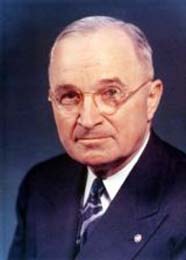
led the US 3rd Infantry Division in Sicily and at Salerno and Anzip in 1943-44; took over VI Corps for the breakout toward Rome and the invasion of southern France in August 1944; returned to Italy in December 1944 to take over the 5th Army and eventually commanded the 3rd Army.

nickname 'Terrible Turner' in US Navy and 'the Alligator' by the Japanese; expert in amphbious warfare; appointed commander of the South Pacific Amphibious Force in July 1942.
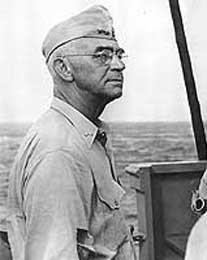
Chief of Staff of US Army Air Forces in the South Pacific in 1942-3, and subsequently commander of the US 13th Air Force and US Air Forces in the Southwest Pacific; directed the increasingly effective air operations against Japanese forces which were crucial to the eventual outcome of the war in that theater; transferred to Italy for a time in 1944-5 to command the 15th Air Force as well as Allied Strategic Air Forces in the Mediterranean, participated in the US Strategic Bombing Offensive against Germany and eastern Europe before returning to the Pacific to command the 20th Air Force in B-29 bombing offensives against Japan itself.
